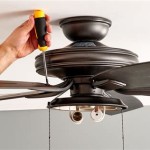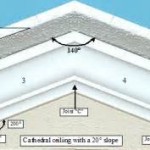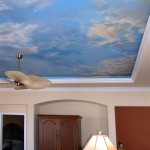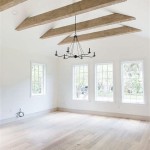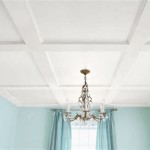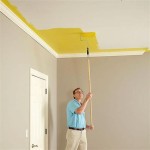Awesome Ceiling Fans To Keep You Cooler
Ceiling fans represent a long-standing and efficient method for improving air circulation and reducing perceived temperature within a space. Their functionality extends beyond mere aesthetics, offering a practical solution for both cooling and, in some cases, heating a room. The market presents a diverse array of ceiling fan options, each with unique features and benefits, requiring careful consideration to make an informed purchase that aligns with individual needs and preferences.
The primary function of a ceiling fan is to circulate air. By moving air across the skin, the fan accelerates the evaporation of perspiration, creating a cooling effect. This is particularly effective in hot and humid climates, where the natural evaporation process is often hindered. Furthermore, the continuous movement of air helps to distribute temperature evenly throughout the room, reducing hot spots and creating a more comfortable environment. This distribution is achieved by drawing cooler air upwards and pushing warmer air downwards.
Selecting the optimal ceiling fan involves evaluating various factors, including room size, ceiling height, fan size, motor type, and aesthetic appeal. Ignoring these aspects can lead to diminished performance, energy inefficiency, and even safety concerns. Understanding the key components and features of a ceiling fan is crucial for making a purchase that delivers lasting comfort and efficiency.
Room Size and Fan Size Considerations
The size of the room is a primary determinant of the appropriate ceiling fan size. A fan that is too small will fail to effectively circulate air throughout the entire space, while a fan that is too large may create excessive wind and noise. Generally, the diameter of the fan blades is used to determine the fan's size. Room size serves as a guide to choosing the ideal blade span for optimal air circulation.
For rooms up to 75 square feet, a ceiling fan with a blade span of 36 inches or less is typically recommended. This size fan is suitable for small bedrooms, bathrooms, or home offices. For rooms ranging from 75 to 150 square feet, a 42-inch ceiling fan is generally appropriate. These rooms often include bedrooms, small living rooms, or dining areas. Rooms between 150 and 300 square feet benefit from a 52-inch ceiling fan. These larger rooms may consist of living rooms, master bedrooms, or open-concept spaces.
For rooms exceeding 300 square feet, a 60-inch or larger ceiling fan may be necessary. Alternatively, consider using multiple ceiling fans strategically placed throughout the room to ensure adequate air circulation. Open floor plans or large living areas often require multiple fans to effectively cool and heat the space. Accurate room measurements are essential for determining the most suitable fan size.
Ceiling height also plays a significant role in fan selection. For standard 8-foot ceilings, a flush-mount or low-profile ceiling fan is recommended to ensure adequate clearance. For ceilings between 9 and 10 feet, a downrod extension of 6 to 12 inches is typically required to position the fan blades at the optimal height for air circulation. High ceilings, exceeding 10 feet, may necessitate longer downrods to bring the fan blades closer to the living space, maximizing its effectiveness.
Motor Types and Energy Efficiency
The motor is the heart of any ceiling fan and significantly impacts its performance, noise level, and energy efficiency. Two primary types of motors are commonly found in ceiling fans: AC (Alternating Current) motors and DC (Direct Current) motors. AC motors are the traditional option and are generally less expensive to manufacture, while DC motors offer superior energy efficiency and quieter operation.
AC motors are known for their durability and relatively simple design. However, they tend to consume more energy compared to DC motors, resulting in higher electricity bills over time. Additionally, AC motors may produce more noise, particularly at higher speeds. The speed settings on AC motor fans are typically limited, offering less precise control over air circulation.
DC motors, on the other hand, are significantly more energy-efficient. They utilize a direct current to power the fan, resulting in reduced energy consumption. DC motors typically consume up to 70% less energy than comparable AC motors. Furthermore, DC motors operate much quieter, making them an ideal choice for bedrooms and other areas where noise is a concern. DC motor fans often offer more speed settings, providing greater control over airflow. While DC motors are typically more expensive upfront, their energy-saving benefits can offset the initial cost over the lifespan of the fan.
Energy Star certification is an important factor to consider when purchasing a ceiling fan. Energy Star certified fans meet strict energy efficiency guidelines set by the U.S. Environmental Protection Agency. These fans typically consume less energy and perform more efficiently than non-certified models. Look for the Energy Star label when shopping for a ceiling fan to ensure optimal energy savings.
Another consideration is the CFM (Cubic Feet per Minute) rating of the fan. CFM indicates the volume of air that the fan can move per minute. A higher CFM rating generally indicates better air circulation. However, it is important to consider the energy efficiency rating of the fan in conjunction with its CFM rating to ensure that it provides adequate air circulation without consuming excessive energy. Some fans may have a high CFM rating but consume a significant amount of power, making them less energy-efficient overall.
Features and Aesthetic Considerations
Beyond the fundamental aspects of size and motor type, a range of features and aesthetic options are available to enhance the functionality and visual appeal of a ceiling fan. These features include integrated lighting, remote controls, smart home compatibility, and reversible motor functionality. Aesthetic considerations such as blade design, finish, and overall style play a pivotal role in selecting a fan that complements the room's decor.
Integrated lighting is a common feature in many ceiling fans, providing both illumination and air circulation. Lighting options range from simple downlights to more elaborate fixtures with multiple bulbs and adjustable brightness settings. LED (Light Emitting Diode) lighting is a popular choice due to its energy efficiency and long lifespan. When selecting a ceiling fan with integrated lighting, consider the color temperature and brightness of the light to ensure that it meets the room's lighting needs. Dimmable lighting options offer greater flexibility and control over the ambiance of the space.
Remote controls provide convenient control over the fan's speed, lighting, and direction. Some remote controls feature timers and pre-set modes for added convenience. Smart home compatibility allows users to control the fan using voice commands or a smartphone app. Integrating the ceiling fan into a smart home ecosystem enables seamless control and automation of the fan's functions.
Reversible motor functionality is a valuable feature that allows the fan to be used year-round. In the summer, the fan blades should rotate counterclockwise to create a cooling downdraft. In the winter, the fan blades should rotate clockwise at a low speed to gently circulate warm air that has risen to the ceiling. This helps to distribute heat more evenly throughout the room, reducing heating costs. Many ceiling fans now have a clearly labeled switch to easily change the direction of the blades.
Aesthetic considerations are crucial in selecting a ceiling fan that complements the room's style and decor. Ceiling fans are available in a wide variety of finishes, including brushed nickel, oil-rubbed bronze, white, and black. The blade design and material also contribute to the overall aesthetic of the fan. Blade materials range from wood and metal to plastic and fabric. Consider the room's color scheme and architectural style when selecting a ceiling fan to ensure a cohesive and visually appealing design.
The installation of a ceiling fan involves some electrical wiring, and safety should always be a top priority. If unfamiliar with electrical work, hiring a qualified electrician is highly advisable to ensure proper and safe installation. Following the manufacturer's instructions carefully is essential to avoid damage to the fan or electrical system. Prior to starting the installation process, turning off the power to the circuit is crucial to prevent electrical shock.
Regular maintenance is essential to keeping a ceiling fan operating efficiently and safely. Dusting the blades regularly prevents the accumulation of dust, which can reduce airflow and increase noise. Check the fan blades and mounting hardware periodically to ensure that they are securely fastened. Tighten any loose screws or bolts to prevent wobbling or vibration. Lubricating the motor bearings as needed can help to extend the life of the fan and reduce noise.
Choosing the right ceiling fan involves a comprehensive assessment of room size, motor type, features, and aesthetic preferences. By carefully considering these factors, consumers can select a ceiling fan that provides optimal comfort, energy efficiency, and lasting value.

5 Hot Ceiling Fan Designs That Will Keep You Cool My Decorative

These 10 Ceiling Fans Will Keep You Cool All Summer

10 Best Ceiling Fans Top To Keep You Cool
Install A Ceiling Fan To Keep You Cool

These Ceiling Fans Don T Just Keep You Cool They Look Too Orange County Register

10 Modern Ceiling Fans To Keep You Cool This Summer

Best V Guard Fans To Keep You Cool All Year Round Top 7 Picks Mint

10 Modern Ceiling Fans To Keep You Cool This Summer

12 Stylish Outdoor Ceiling Fans 2025 Our Top Picks

Ceiling Fans Can Keep You Cool And Help Conserve Electricity
Related Posts

